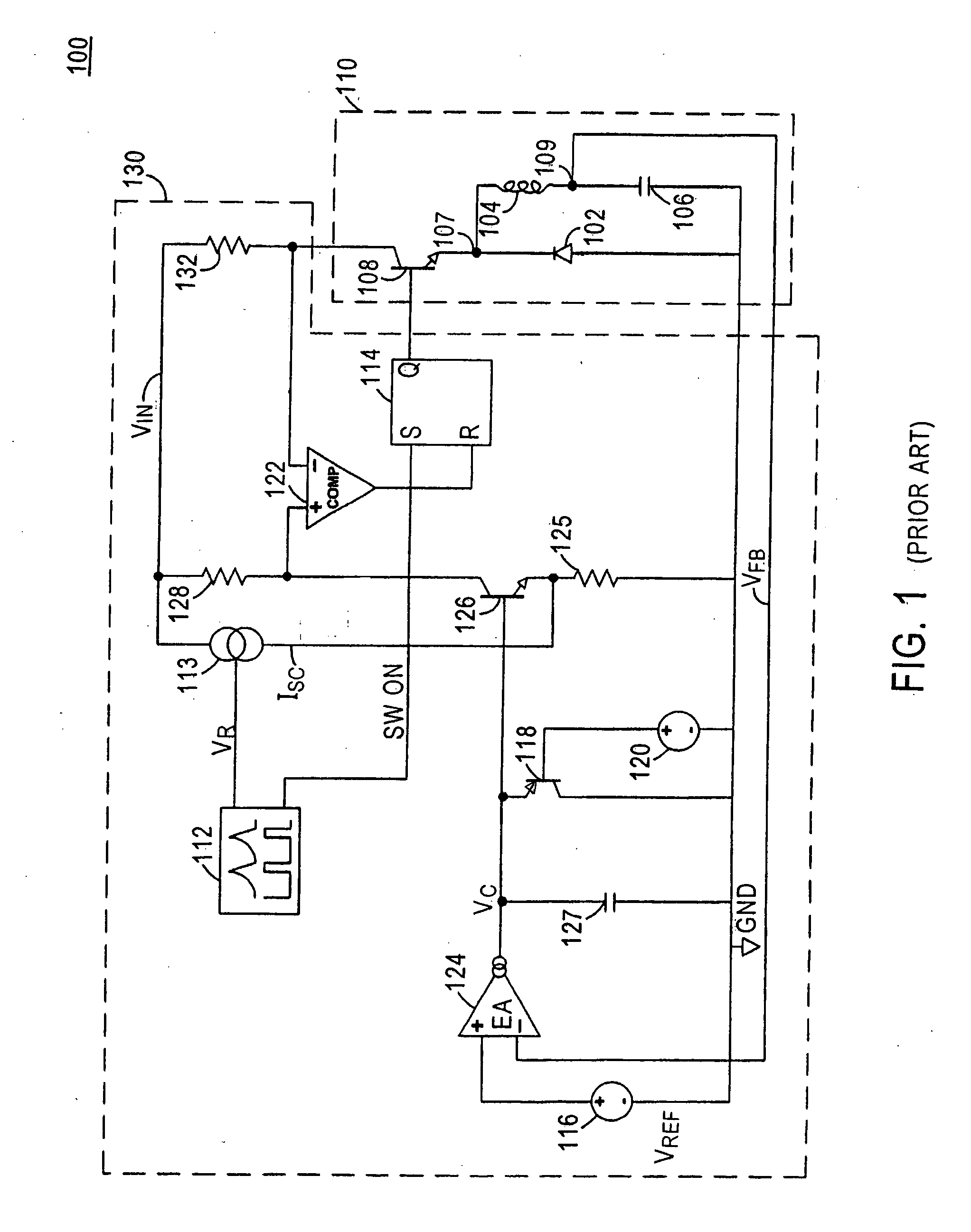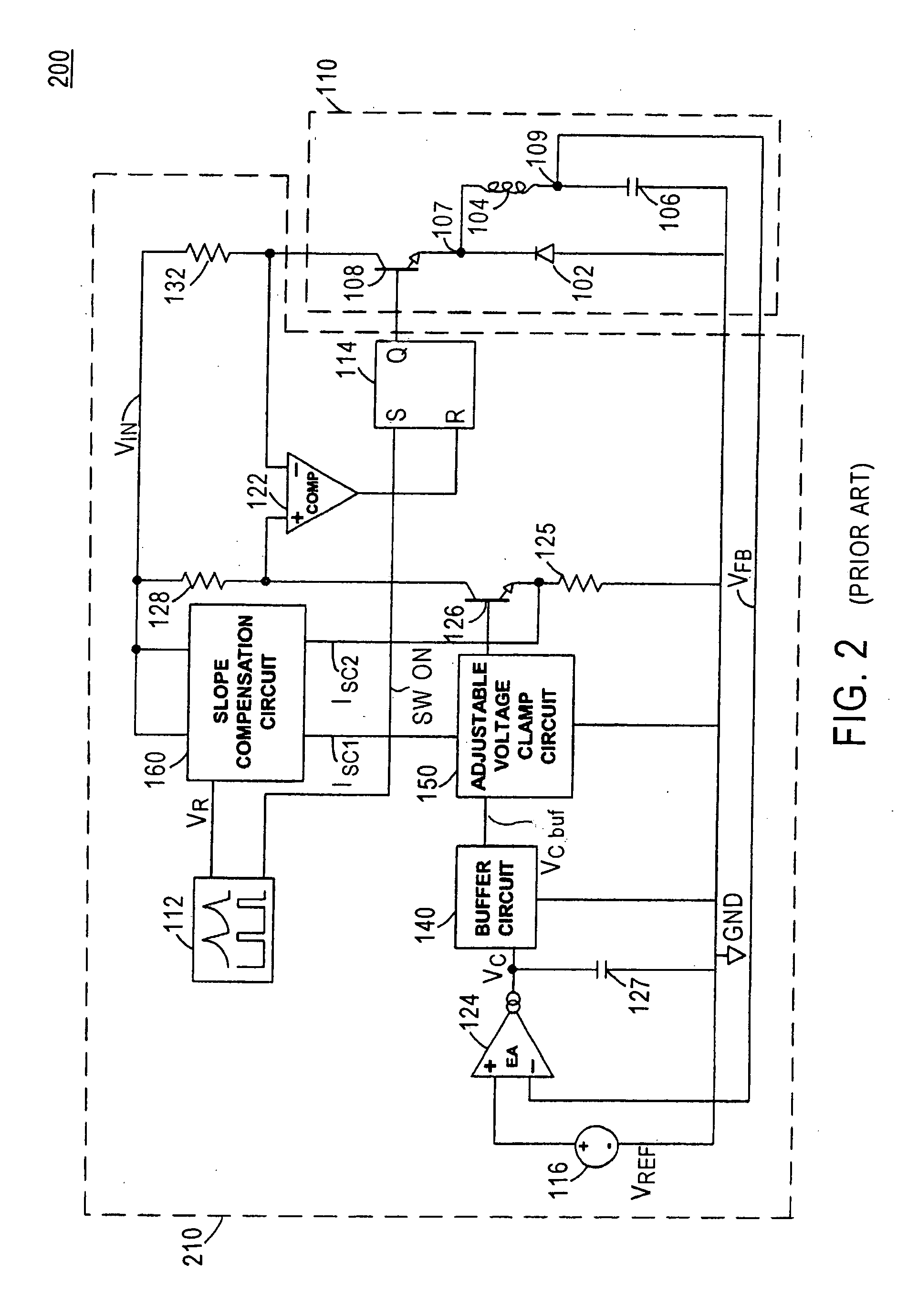Switching regulator with advanced slope compensation
a technology of slope compensation and switching regulator, which is applied in the direction of power conversion systems, instruments, dc-dc conversion, etc., can solve the problems of inability to achieve the true maximum current that can pass through the switch b>108/b>, and inability to achieve stable current. the effect of 108
- Summary
- Abstract
- Description
- Claims
- Application Information
AI Technical Summary
Benefits of technology
Problems solved by technology
Method used
Image
Examples
Embodiment Construction
[0027] In the following description, for the purposes of explanation, numerous specific details are set forth in order to provide a thorough understanding of the present disclosure. It will be apparent, however, to one skilled in the art that the present method and system may be practiced without these specific details. In other instances, well-known structures and devices are shown in block diagram form in order to avoid unnecessarily obscuring the present disclosure.
[0028]FIG. 3 depicts an exemplary block diagram of an exemplary switching regulator 300 with improved slope compensation according to this disclosure. Switching regulator 300 provides a predetermined and substantially constant output voltage to a load 32 from a voltage source 30. Switching regulator 300 includes a control circuit 50 that generates a control signal 22 to control the operation of a switch circuit 25, which in turn controls the coupling of load 32 to voltage source 30 or ground. Control signal 22 is slop...
PUM
 Login to View More
Login to View More Abstract
Description
Claims
Application Information
 Login to View More
Login to View More - R&D
- Intellectual Property
- Life Sciences
- Materials
- Tech Scout
- Unparalleled Data Quality
- Higher Quality Content
- 60% Fewer Hallucinations
Browse by: Latest US Patents, China's latest patents, Technical Efficacy Thesaurus, Application Domain, Technology Topic, Popular Technical Reports.
© 2025 PatSnap. All rights reserved.Legal|Privacy policy|Modern Slavery Act Transparency Statement|Sitemap|About US| Contact US: help@patsnap.com



